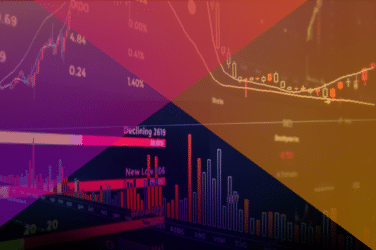
Algomi. the fintech firm, has formed a partnership with Euronext, the pan-European exchange, to improve corporate bond liquidity in the region but this could be extended as global regulations pressure bank balance sheets.
Last week Euronext announced a 10-year partnership with Algomi to deploy the bond information network’s technology for a new multilateral trading facility. Euronext has invested $2.3m (€2.1m) in the joint venture and will own and operate the MTF.

Stu Taylor, Algomi
Stu Taylor, chief executive of Algomi, told Markets Media that the partnership with Euronext is exclusive in Europe. Taylor said: “The concept is strong so we could look at other partners in other regions. We are looking to develop the concept globally with third parties, but that could also include Euronext.”
In the European Union MiFID II, new regulations covering financial markets from 2018 , sets new pre-trade and post-trade transparency requirements for bond markets so both the sell side and buy side are looking at alternative ways of sourcing fixed income liquidity. However global regulations such as Basel III have imposed increased capital requirements on bank balance sheets.
A survey from the CFA Institute last month found that respondents from the Americas and Europe, Middle East and Africa said bank capital and liquidity regulations have significantly reduced bond market liquidity and policymakers should focus on removing impediments to the smooth functioning of institutional wholesale markets. However in Asia Pacific respondents said no single factor has had a very significant impact on bond market liquidity.
Sviatoslav Rosov, an analyst in the capital markets policy group, wrote on the CFA Institute blog: “A broad brush reading of the survey results seems to suggest that bond market quality concerns are mostly an Americas and Emea problem, with Asia Pacific respondents experiencing relatively more positive changes in recent years.
The survey had responses from 513 CFA members. The majority, 53%, were from the Americas, 29% from the Europe, Middle East, and Africa and 18% from Asia Pacific. Approximately half, 51%, of respondents were from the buyside, 13% from the sellside, 9% straddled both and 27% selected “neither.”
Respondents from the Americas and Emea also reported a fall in the number of active dealers making markets, an increase in the time taken to execute trades, a lower proportion of bonds being actively traded and more unfilled orders. In contrast, respondents in Asia-Pacific said the number of active dealers making markets and the proportion of bonds being actively traded had both risen.
Paul Humphrey, head of fixed income, rates & FX at Euronext, said in a blog that the new MTF is due to be launched in the third quarter of next year.
“Dealers will be able to access the trading interface directly through their existing Algomi technology, thus linking Euronext, banks and investors in a collaborative network,” Humphrey added. “The current limited data on buyers and sellers, results in low liquidity and this platform will use algorithmic smart matching processes to search for liquidity and best execution.”
He added that existing data from Algomi’s Honeycomb network suggest that over 40% of less liquid indications ’of interest could benefit from being matched on the new Euronext platform.
When Algomi launched it built internal networks for banks to connect together staff who could help transact less liquid corporate bonds but the firm has since added asset managers to its Honeycomb network so they can easily and quickly find the best bank to execute large trades. However Honeycomb could not connect two banks together, which will now be available via the Euronext MTF.
Humphrey said: “Today, if dealers are unable to find a match within their own client network, they have a choice; to enter the order into a request-for-quote environment to find a match, or give the order to a broker to source a matching counterpart over-the-counter.”
The CFA survey found that in all three regions, a plurality or majority of respondents said the growth in electronic trading in the secondary corporate bond market has had little to no impact on liquidity. However, 30% reported improved liquidity as a result of technological changes and very few think technology has had a negative impact.
Brad Bailey, research director, securities and Investments group at Celent, a division of consultancy Oliver Wyman, said in an email to Markets Media that as electronic trading has grown, clients want tools and services to aggregate liquidity from all available sources, as well as flexible market structure models in order to ensure best execution and greater access to data.
Bailey told Markets Media that the joint venture between Euronext and Algomi makes a lot of sense as they each bring key components to creating a at they each bring key components to creating an alternative model for sourcing fixed income liquidity.
“This also makes sense in the run-up to MiFID II as both the sellside and buyside are remapping their fixed income execution and trading workflows,” Bailey added.
The Desk’s Trading Intentions Survey 2016 found that the platforms currently most effective at sourcing liquidity were Bloomberg and then MarketAxess as a close second, followed by Tradeweb, Algomi and then Liquidnet. The Desk survey had 70 responses from North American, European and emerging market credit desks spread across 34 investment managers, with an aggregate of €15.4 trillion in assets under management.
Liquidnet, Algomi and Neptune were also first, second and third choice for the second year running as the platforms that traders plan to use. The Desk said: “It is worth noting that many of the most successful models are not those which aggregate actionable liquidity. The services provided by Algomi, Neptune and B2SCAN all focus on the use of information to support where to trade rather than offering a venue to introduce the platforms as with request for quote systems, or any auction or order book.”
More on fixed income liquidity:
- Euronext and Algomi Look to Deepen Bond Liquidity
- Liquidnet Sees Growth in Fixed Income
- Algomi Benefits From Cloud Adoption
<






